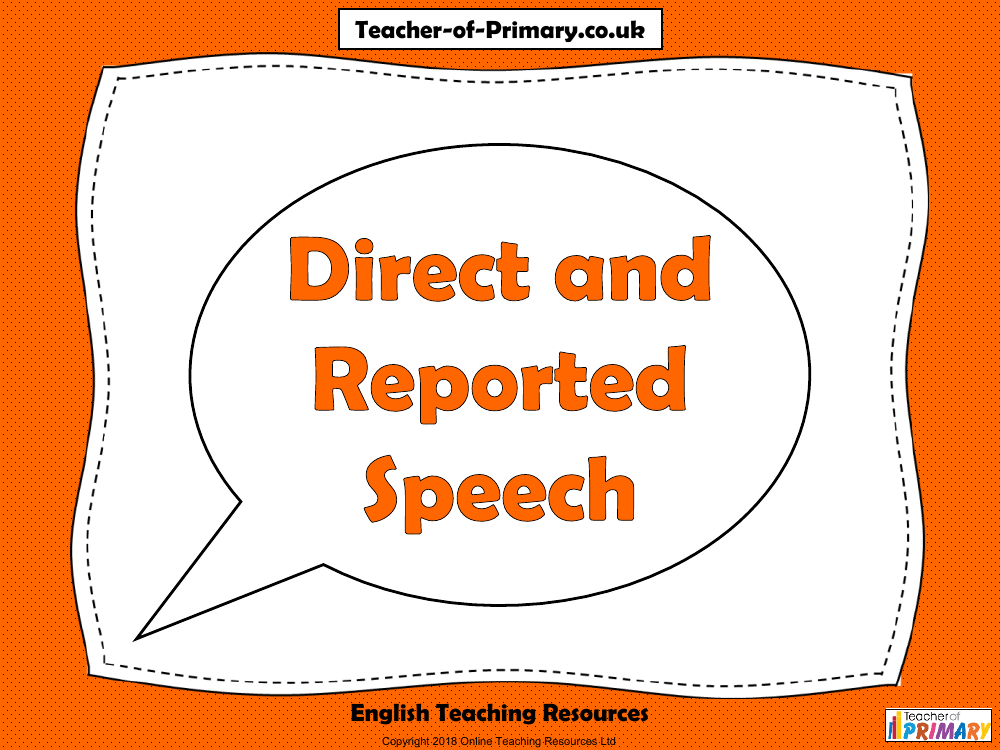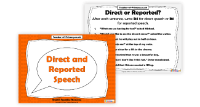Direct and Reported Speech - PowerPoint

English Resource Description
The PowerPoint presentation on Direct and Reported Speech is an educational resource designed to help students understand the difference between these two ways of conveying speech in writing. The learning objectives are clear: for reading, students will learn to recognise direct and reported speech, and for writing, they will learn how to use them effectively in their written work. Direct speech is explained as the exact words spoken by a person, enclosed in speech marks, as in the example "Paul said, 'My feet are aching.'" In contrast, reported speech is when the speaker's words are not quoted directly but are paraphrased and usually written in the past tense, without speech marks, such as "Paul said that his feet were aching."
The resource includes exercises to help students identify and practice using direct and reported speech. One exercise asks students to read sentences and determine whether they contain direct or reported speech, providing examples like "What time is it?" asked Simon (direct speech) and "Grandad said that he enjoyed the party" (reported speech). Another activity challenges students to convert sentences from direct to reported speech, with examples provided for reference. In this way, the resource aims to build students' skills in recognising and using both forms of speech in their reading and writing, enhancing their understanding of English language conventions.


